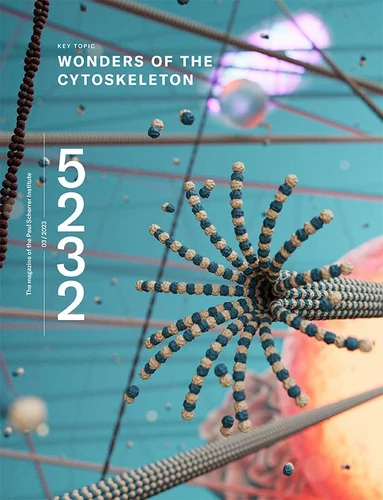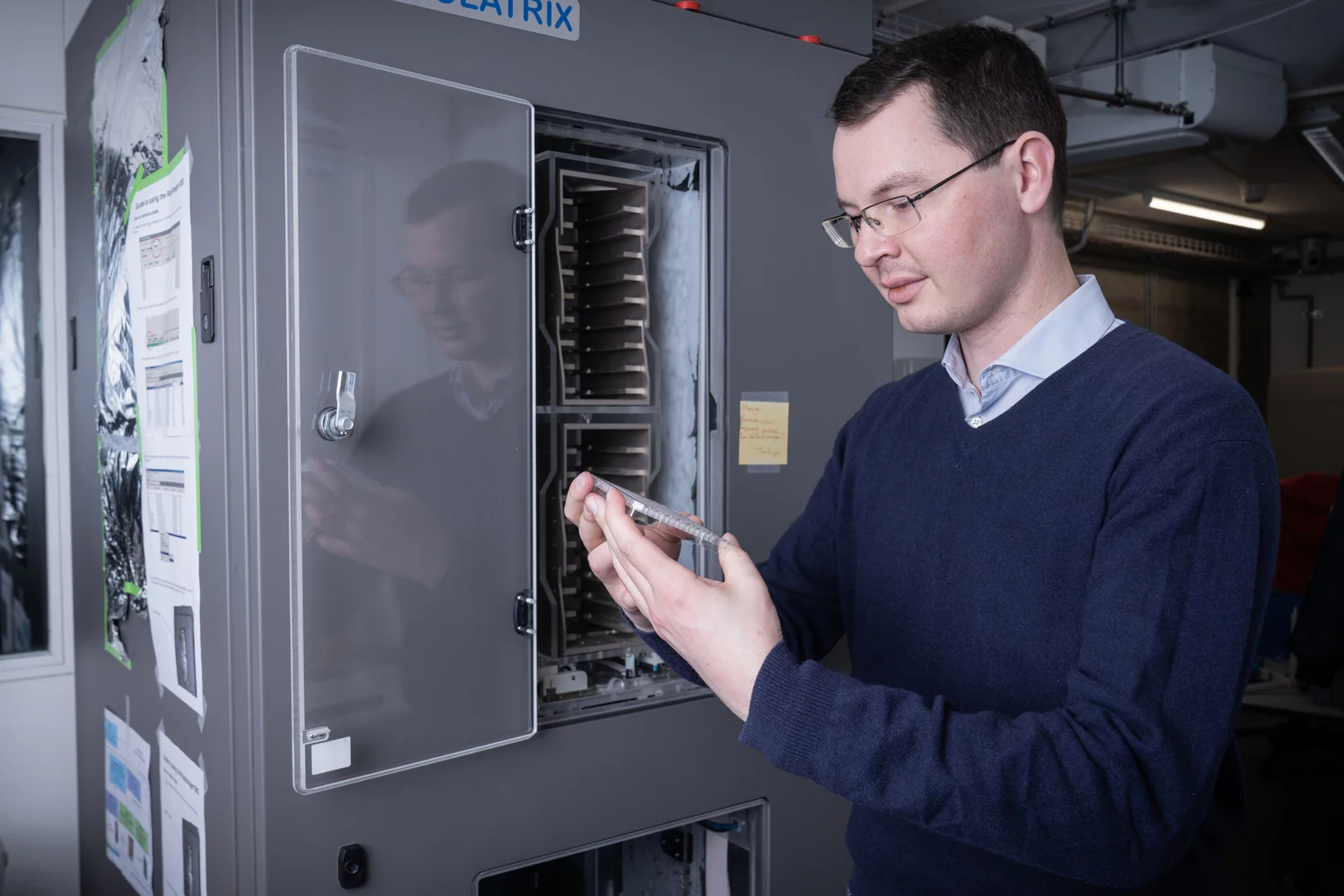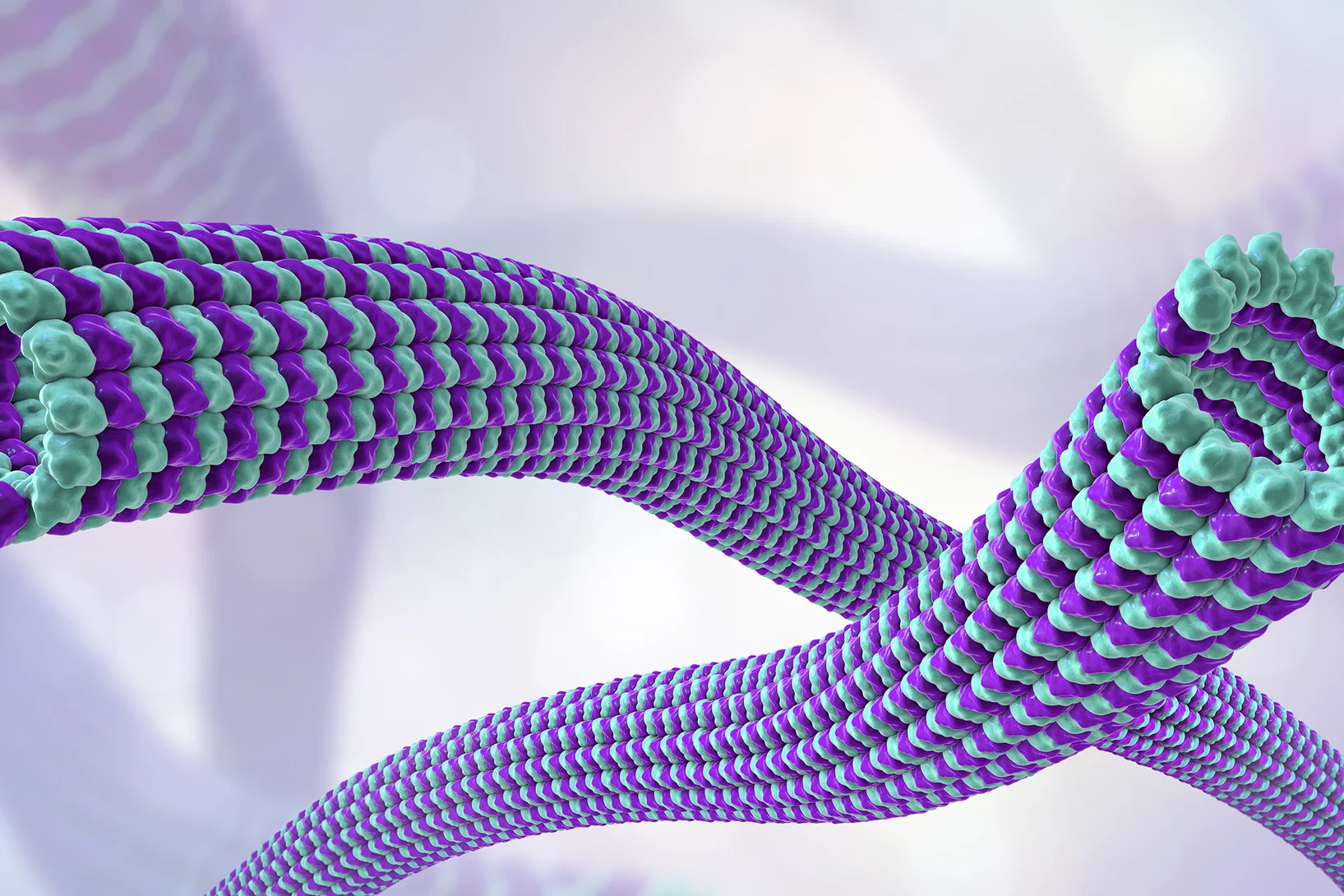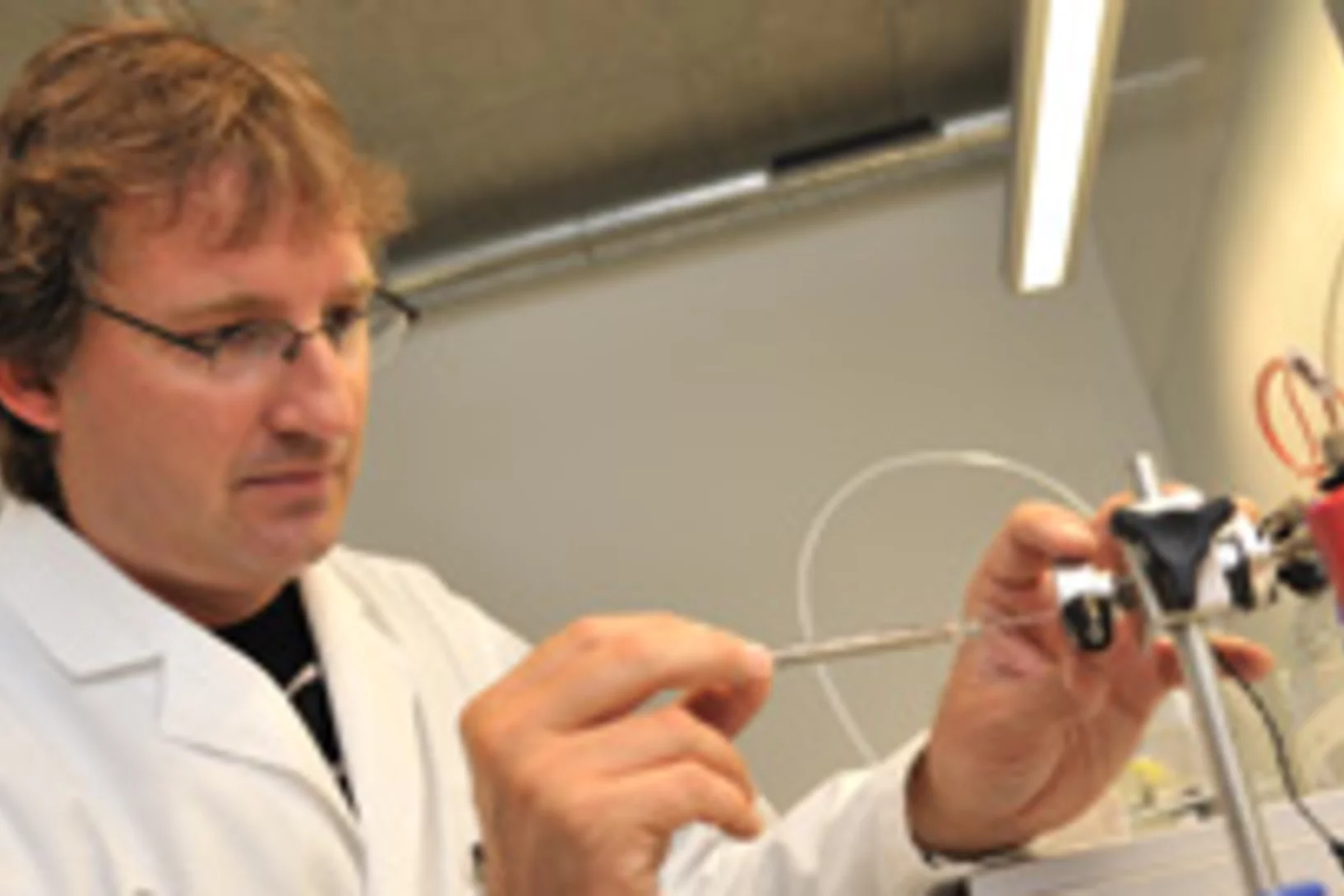The human body consists of around 30 trillion cells – all of them highly complex structures with a wide variety of shapes and functions. What they all have in common is the cytoskeleton.
(Video: Paul Scherrer Institute/Monika Blétry)
The name skeleton seems misleading – since the cytoskeleton is in fact not a rigid framework but rather a very dynamic structure. It not only ensures the cell’s mechanical stabilisation and external shape, but also plays a central role in transport within the cell as well as in cell division.
Of particular importance for cell division are the so-called microtubules. These tubular protein complexes are a significant component of the cytoskeleton. However, it is not only the healthy cells that they help to multiply; cancer cells and pathogens, for example, are also able to divide with the aid of the microtubules.
For this reason, researchers at PSI are using the large research facilities to find docking sites for new drugs. This could make it possible, for example, block the degradation of microtubules and prevent the division of diseased cells.
You can find out more about this topic in the current issue of our magazine 5232 issue 3/2023.
Text: Paul Scherrer Institute/Benjamin A. Senn
© PSI provides image and/or video material free of charge for media coverage of the content of the above text. Use of this material for other purposes is not permitted. This also includes the transfer of the image and video material into databases as well as sale by third parties.
Contact
Prof. Dr. Michel Steinmetz
Head of the Laboratory for Biomolecular Research
Paul Scherrer Institute, Forschungsstrasse 111, 5232 Villigen PSI, Switzerland
+41 56 310 47 54
michel.steinmetz@psi.ch [German, English]




